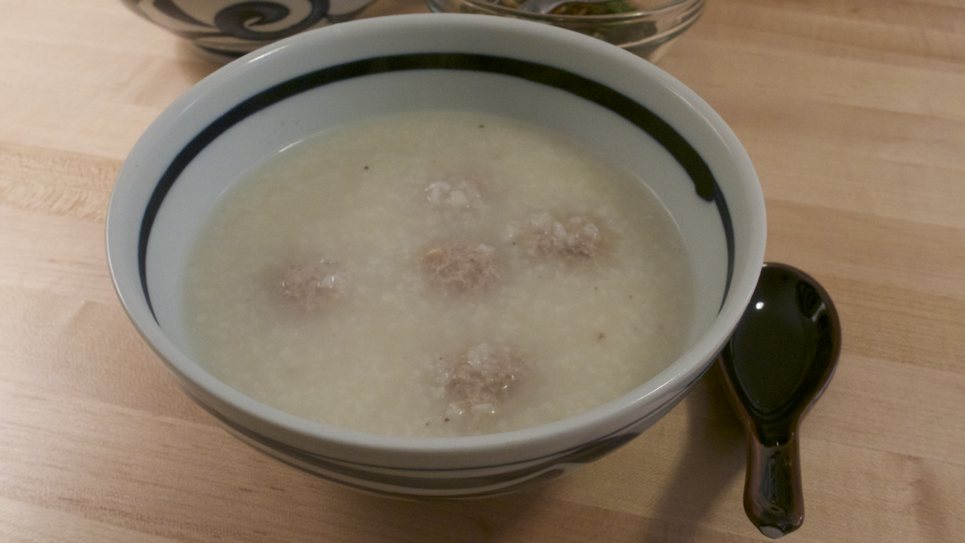粥 (“jōk”) / congee: a porridge-like rice dish made by boiling water with rice until the rice grains explode.
I think of congee as Chinese comfort food. It’s made mostly with rice and water and then embellished with ingredients like fish fillets or meatballs. Around Thanksgiving time, my mom even makes congees using shredded turkey meat.
Although I’ve eaten congee my entire life, I’ve always shied away from making it myself because I never knew what to do. I thought that the process involved a difficult cooking technique that I didn’t already know, but I made my own congee for the first time this year, and it surprisingly resembled the process of making a soup. Below, I document the entire experience in pictures.
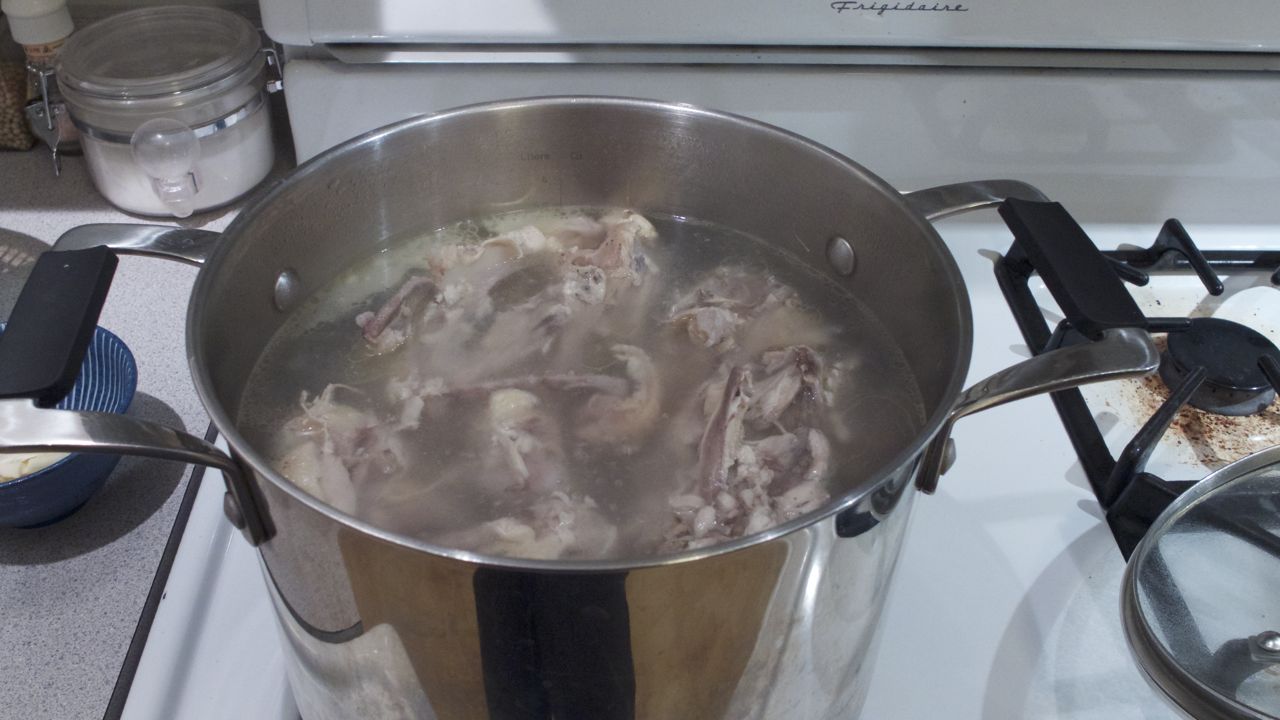
Congee can be made with just water, but I started with a chicken broth made from leftover roast chicken carcasses for more flavor.
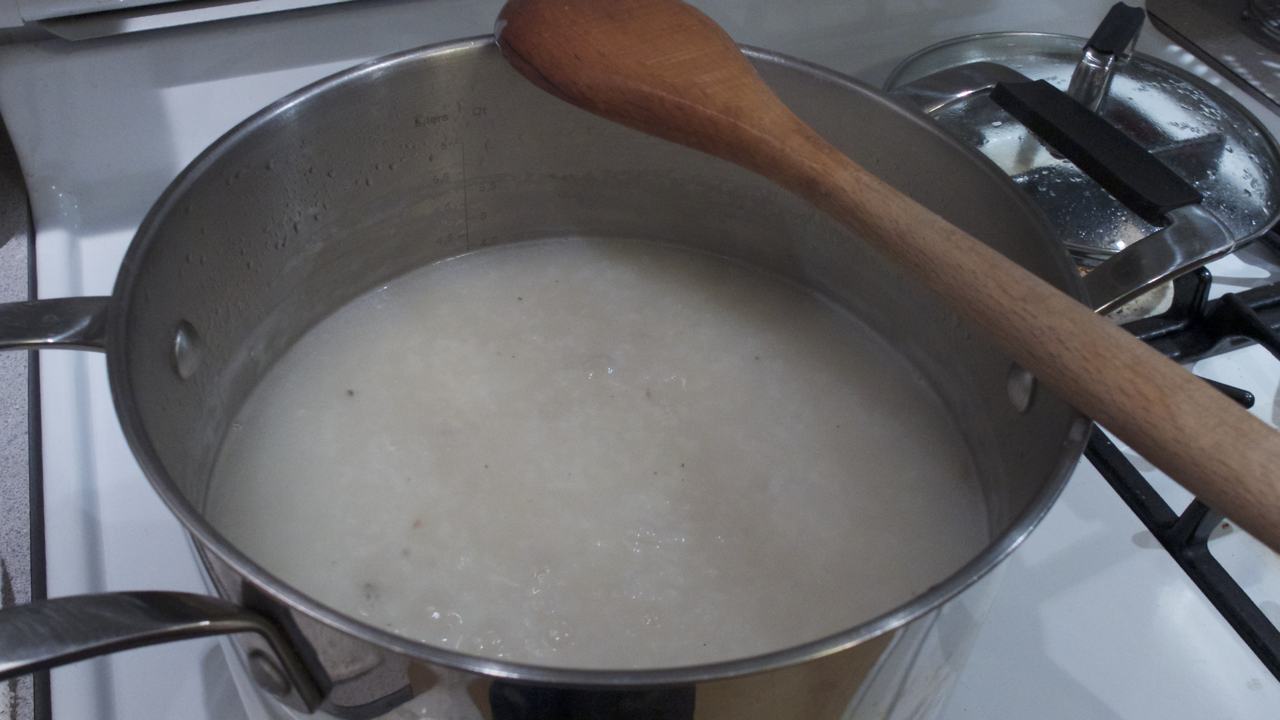
After the stock is done, I removed the chicken bones and added rice to the stock pot. After simmering for two hours, the individual rice grains break apart, causing the rice and water mixture to homogenize and substantially thicken.
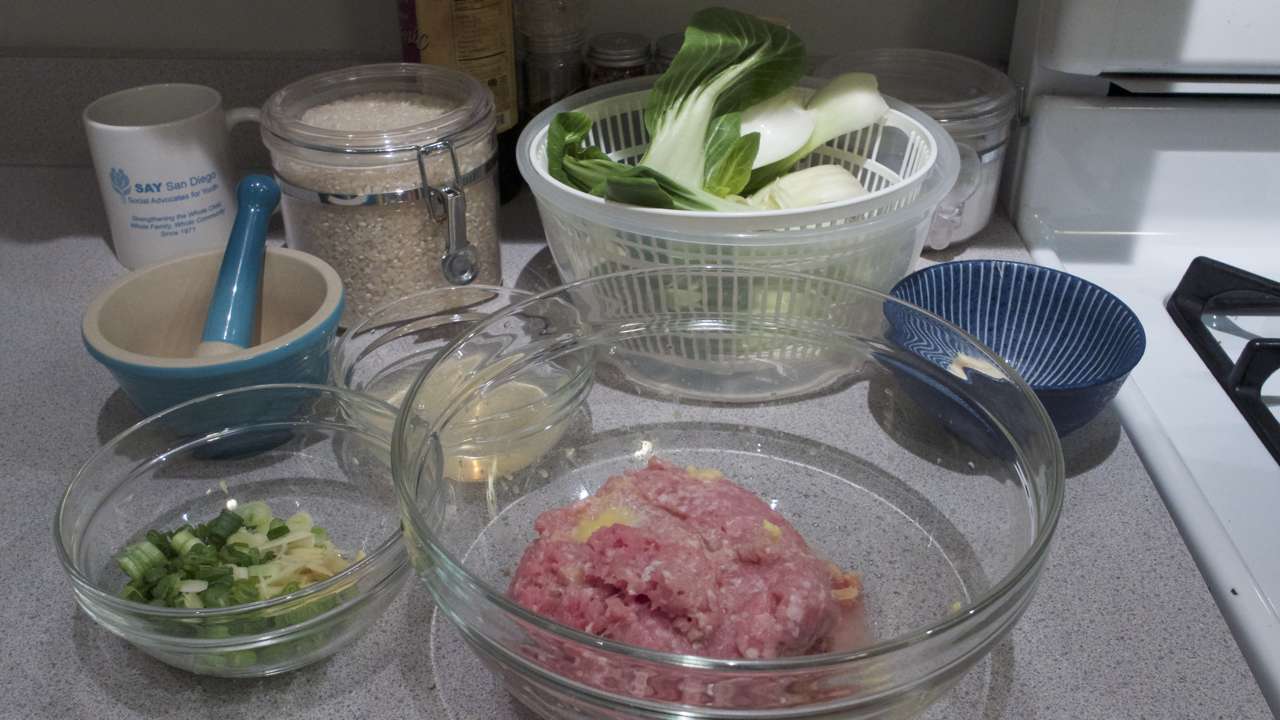
Although rice-only congees are an actual dish in Hong Kong, rice-only congees have little flavor. Restaurants typically only serve rice-only congees for breakfast with 油炸粿 (“yao zha gwai”), a savory fried dough. So, to flavor this congee, I made pork meatballs by mixing ground pork with ginger, white pepper, salt, and rehydrated dried scallops.
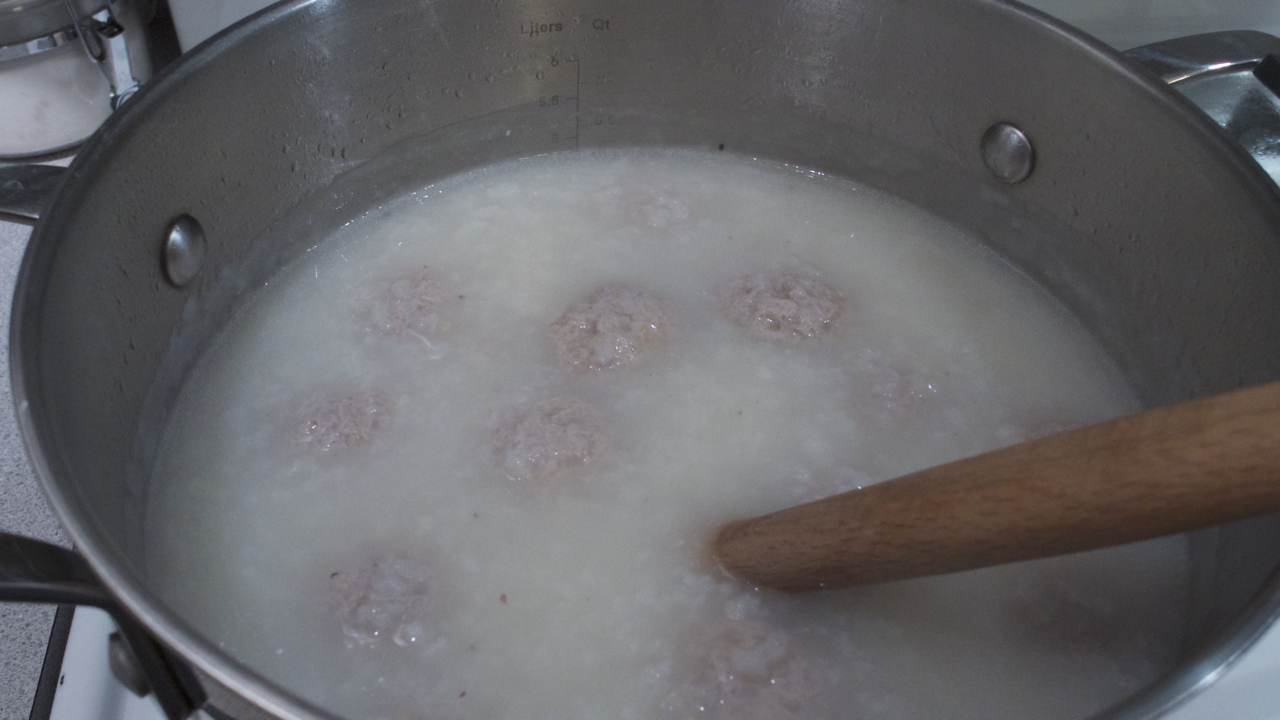
After the rice mixture thickened, I rolled the meatballs and dropped them into the stock pot. Meatballs are great because they have their own internal thermostat—when they’re done, they float to the surface!
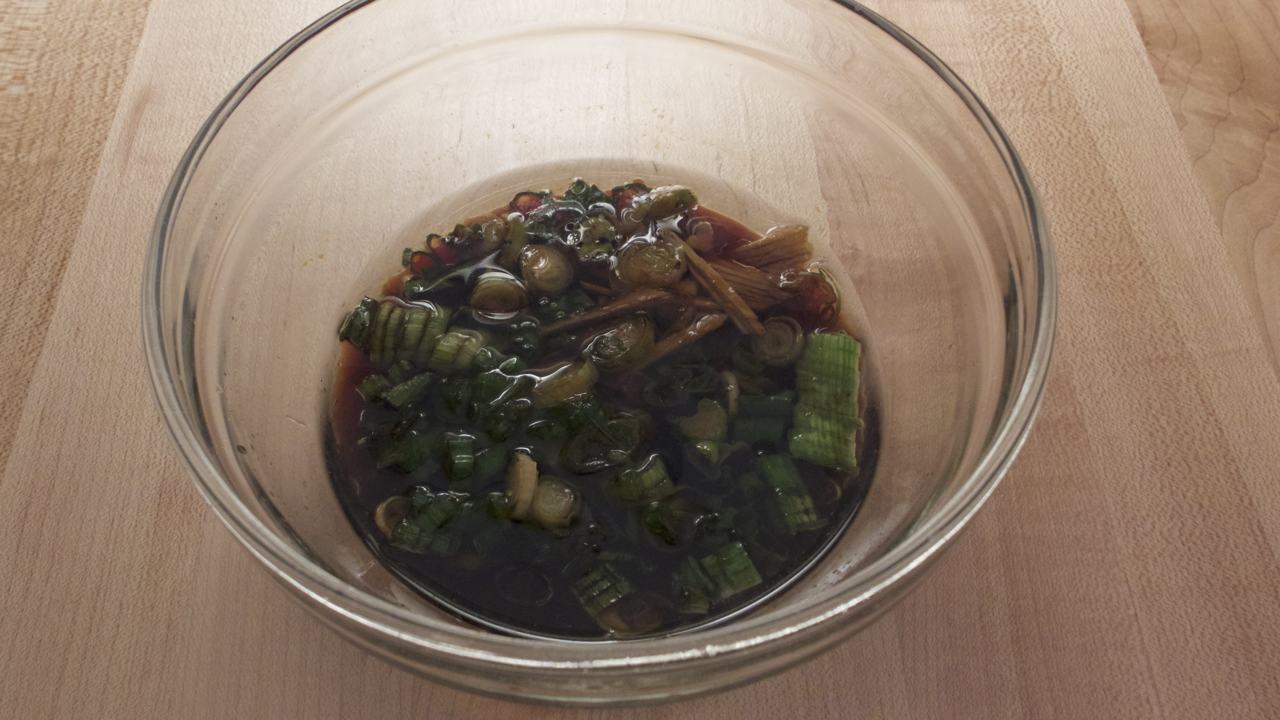
To garnish the congee, I scalded ginger, scallion, white pepper, and soy sauce with hot vegetable oil and added a spoonful to the congee.
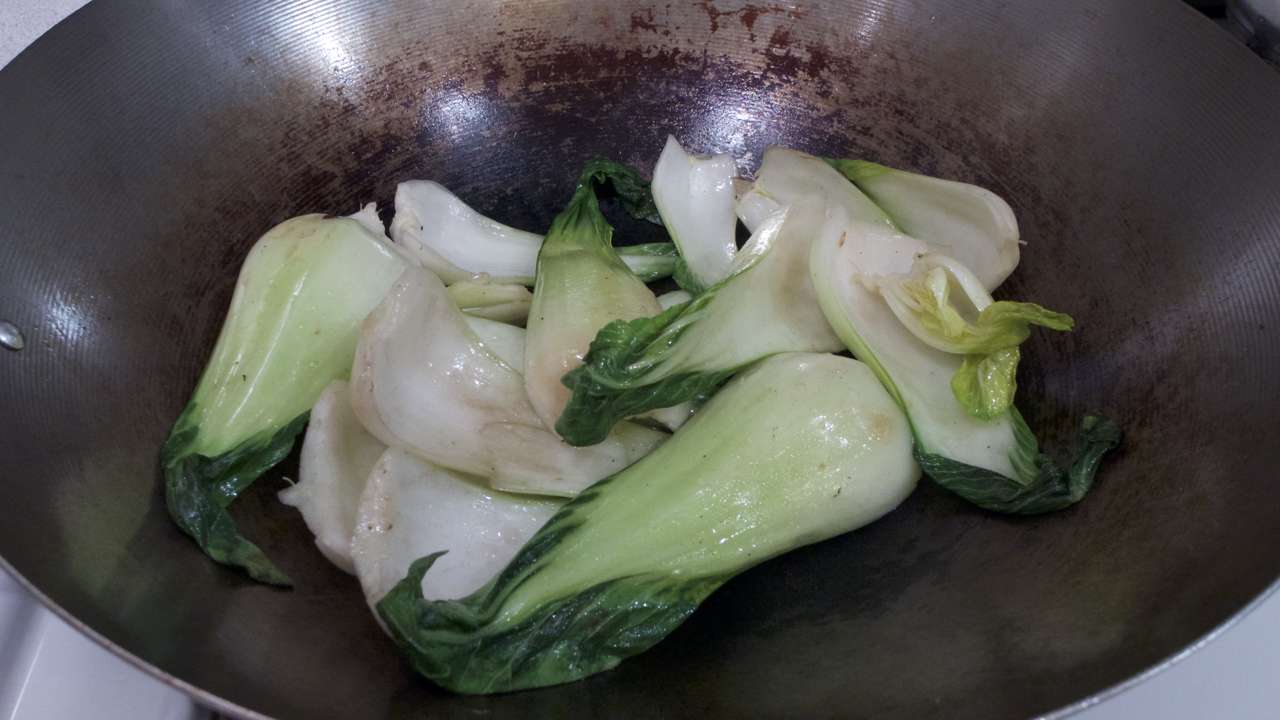
Lastly, to complement this starch-and-protein heavy meal, I stir-fried garlic with baby bok choy and served it alongside the congee.
